A special report for Saving Iceland by Miriam Rose
In 1969 the first of three aluminium smelters was built in Iceland at Straumsvík, near Hafnafjörður, on the South West side of Reykjavík by Alusuisse (subsequently Rio Tinto-Alcan). In 1998 a second smelter was constructed by Century Aluminum (now a subsidiary of controversial mining giant Glencore), at Hvalfjörður near Reykjavík, and in 2007 the third, run by Alcoa, was completed at Reyðarfjörður in the remotely populated East of the country. The Icelandic Government had been advertising the country’s vast ‘untapped’ hydroelectric and geothermal energy at ‘the lowest prices in Europe’ hoping to attract jobs and industry to boost Iceland’s already very wealthy but somewhat fishing dependent economy. The industry, which would permanently change Iceland’s landscape with mega-dams, heavy industry scale geothermal plants and several kilometer long factories, was promoted by the Icelandic Government and the aluminium companies as ‘good employment for a modern age’. However, ten years after the flagship Alcoa Fjarðaál project was completed, unemployment is higher than it was in 2005, and Iceland’s economy has become dependent on an industry which is vulnerable to commodity cycle slumps and mass job losses. Worse, the price charged for Iceland’s energy is tied to the price of aluminium and analyses of the country’s 2008/9 economic crisis suggest it was exacerbated by the poor terms of Iceland’s late industrialisation. Yet demands for further industrialisation remain, and more than 1000 Icelanders are employed in the aluminium sector.
This article exposes the conditions inside Iceland’s aluminium smelters based on interviews with workers conducted in 2012. The stories from two smelters share correlating accounts of being forced to work in dangerous conditions under extreme pressure, and without adequate safety equipment, leading to serious accidents which are falsely reported by the companies. These shocking allegations require serious attention by the trade unions, Icelandic government and health and safety authorities. This especially in the current context of labour disputes with the aluminium companies, alongside revelations about the same companies’ tax avoidance schemes and profiteering in the country.
Century, Grundartangi:
A former worker from the Century plant at Grundartangi shared his story, though did not want his identity revealed. Steini (not his real name) had worked at the plant for ten years and only quit recently.
“When I went to work there I thought of it as just a job and it was good pay. My experience of it was that they were taking our labour for cheap and making work us like slaves. The only thing we get out of it is our pay.
There were so many accidents that were their fault, not ours. They put so many rules in place, but you have to break the rules to get the work done, which they are pressuring you to do, then if something goes wrong its all your fault.”
Steini described how bonuses are awarded to the shift according to the number of accidents. If you have an accident and are off work you lower your annual bonus. At first the bonuses included smart new bikes, then they were reduced to a restaurant meal, and finally just pizza and beer.
He described the pressure of the job; how workers are pushed to work harder, but as soon as they get quick at the tasks they add more work so they are even more pressured. Akin to Alcoa Fjardaál in the East of Iceland the turnover rate is around 20% with only a handful of people staying for ten years as he had. Similarly, both Alcoa and Century Aluminum have gradually replaced permanent jobs with contract labour. Increasingly the work force was made up of University students on summer jobs which made the work even more risky as this short term labour was less experienced and more prone to accidents.
Shifts were twelve hours long, for 183 hours/month and the working hours were very unsociable, many at night for three days in a row. Steini described how most of the days off in between shifts were used to sleep and recover energy in order to work again. As the plant was expanded and more pots were added the work got harder.
“Everybody who works in Norðurál [Century] hates it. Most of the people are eating anti-depressants and everything. They hate the company, they hate the work but they are afraid to change and be without work.” He said.
He described how many accidents there were at the factory and how the company avoid paying compensation or having to report the severity of the incident;
“I got a broken finger, I burned my feet and once I had a forklift drop on my arm. I never got any compensation from the company and when I went to insurance companies I could get nothing either. The company ask you to come back to work as soon as you can move and just sit at the computer, then they count that as being ‘well’ in their records so it looks like less ‘work days lost’. The insurance companies also see it this way so it it very hard to get compensation.
One guy was doing something very risky and fell into the [molten aluminium] pot up to his knees. He was on morphine for a few weeks. I remember the health and safety guy coming out of a meeting with him smiling. He had admitted that it was all his own fault.”
Industry standards on reporting discriminate between lost time injuries and restricted work injuries, with the former being taken more seriously. Like Alcoa, Glencore claim that the ‘total recordable injury frequency rate’ (TRIFR) is being reduced annually. Nonetheless ten people died at Glencore’s global operations last year according to their 2015 Annual report, and sixteen in 2014.
Scandals over worker’s rights had previously erupted in Iceland during the construction of several mega power projects for the aluminium industry after the conditions of cheap foreign labour were exposed. More than a dozen Chinese and other foreign workers died during the construction of the Kárahnjúkar dam and several Romanian workers suffocated in geothermal pipes on the site of a Reykjavík Energy work camp in Hellisheiði where they worked up to 72 hour weeks.
Steini described the heat of the pot rooms and how restrictive and hot the many types of safety clothing are. As a result most workers chose to use the minimum amount of safety clothing, enabling them to be comfortable and work faster to get bonuses;
“You used as little safety equipment as you could so you could get the job done. When I was in the pot room I just used a paper mask for comfort. I stopped noticing the smell of the gases, then after a period working in the pot lining rooms I went back to the pot room and I really smelt it. It chokes your throat and you know it’s bad.”
‘Pot rooms’ are huge sealed troughs of carbon anodes and aluminium flouride through which up to 320,000 amps of electricity are passed to separate the strongly bonded oxygen from the alumina. Molten aluminium is then ‘tapped’ from the pots and cast into ‘ingots’. The process generates gases including inorganic fluorides, sulphur dioxide, CO2 and perfluorocarbons. Perfluorocarbons (PFCs) are extremely potent greenhouse gases lasting up to 50,000 years in the atmosphere. Tetrafluoromethane, the most common PFC is 6,500 times more potent a greenhouse gas than CO2 and its main global source is from aluminium smelters. Sulphur dioxide and fluoride emissions are acidic and can kill or stunt plant growth. Fluoride emissions also build up in the bones and teeth of animals and humans causing Skeletal Fluorosis, which weakens bones and can lead to bone deformation much like arthritis. Farmers living around Centrury’s smelter in Hvalfjörður claim their sheep and horses have got sick and even died from flouride poisoning.
Saga (not her real name) started work in Century Aluminum’s Grundartangi smelter in 2006, before turning twenty. It was her first big job and her introduction to the working world. She was working twelve hour shifts from the outset, and her work began in the pot rooms. Like Steini she described the fallacy of the health and safety training;
“We were told to wear dust-masks because of all the dangerous and unhealthy gases that come out of the pots, also because of the alumina, fluoride and other pollution in the air. You could always smell it all through the mask though. It was emphasized very heavily not to smoke inside because smoking inside the pot-rooms could result in ‘stone-lungs’ in few years time, which is very common amongst smelter-workers. That is because of all the pollution in there. If you would smoke inside, you were inhaling three times more tar and other stuff straight down to your lungs than if you where smoking outside in more normal surroundings. We also learnt that pregnant women are never allowed to enter the pot-rooms because there is a great risk of foetal harm.”
Saga accused Century of extremely low health and safety standards and condemned the company for making workers “repeatedly risk their lives to keep the smelter operational into the next shift”. She described being given second hand protective clothing in poor condition, and claimed that much of the equipment was in need of repair but was still being used as parts were hard to come by. Like Steini she had witnessed and experienced serious injuries, which had been misreported or disguised by asking workers to come in for office days when injured in order to improve the figures on workdays lost due to injury;
“Working for show” you could call it. I have even heard about workers with broken legs being made to show up for hanging out in the office for a few hours just to keep the records clean. It was easy to pressure people with many passive methods, such as bringing down the accident record which means that their shift doesn’t get a reward like the others that went through the year “without” accidents that caused absents.”
She gave a scathing and detailed account of the pressured and dangerous work environment;
“I witnessed others, and found myself, doing dangerous and life threatening things in the smelter. This was not because we had some kind of death wish or thirst for adrenaline but because there was no other way to finish our daily jobs on time. There is no other choice than to climb on that pot, drive that windowless forklift, work on this broken down and not really functioning crane today, not take proper breaks. Be one doing two people’s jobs, drive too fast because you have to hurry and “fixing” things with all possible and impossible ways so they will last just a little bit longer. I have seen people run away, scared for their lives, and then being forced back because somebody has to take care of what went wrong. I have witnessed what happens after a pot explodes.
Far too many people cram themselves into vehicles, because distances are very long and your main transport is your own two legs on the hard concrete floors. These are all labeled as dangerous things to do in there and in theory they are not “really” allowed. For example climbing on pots –which are very often badly closed and have broken lids or holes. Working alone on a crane, which is strictly speaking never allowed, always to be performed by a team of at least two workers. That’s because of the danger of people passing out from the heat, exhaustion, lack of liquid, rest or food, and a crane-operator could very likely be in a critical place when that happens, like over an open pot. Driving vehicles with the lights not working, broken windows or too filthy windows to actually see out is not allowed. Neither is the operation of any vehicles or cranes without proper training, or vehicles and cranes that are broken or not functioning properly. Having your shoes not closed all the way, having an old helmet, old shoes, no dust-mask, standing under an crane in use, not preheating your tools well enough to touch liquid metal or acid. Working in too much loudness, too much darkness or too much pollution. Not getting the breaks that you are entitled to. Teaching yourself how to do things. Working with a person you don’t trust or yourself being in so bad physical state, like suffering illness, fatigue, hunger, pain, that you don’t even trust yourself.
All of these things, I have had to do to finish my duties, just like everybody else in there (at least back then). Of course I could have said no at any given time, but you don’t really want to do that when you know that it is just going to be somebody else, a co-worker who is in the same shoes as you, that will have to take care of it and finish what you left. Everything has to be finished every day no matter what it takes.”
Alcoa Fjarðaál.
The Alcoa plant in the East of Iceland was heralded by the Icelandic Government as the saviour of the waning Eastern economy and a fantastic employment opportunity which would bring young people from Reykjavík to the East. Officials promised up to 1000 permanent jobs, plus another 2.5 jobs created in other sectors for each job in the aluminium industry. Ten years later, however, few of the promised benefits have come to the region, and overall unemployment in Iceland, which was less than 3% in 2005, reached 7.5% in 2009 and remained at 5% 2015.
Alex Smári drove the Alcoa bus from Stöðvarfjörður to Reydarfjörður from 2006 to 2008. He says people in the East believed work in the smelter would be easy, with good pay and plenty of time off, but the reality had turned out to be very different. He described workers returning from their shifts as ‘like corpses’ in the bus, and claims many quit their jobs after a short time. In his opinion the East has not become more thriving as the politicians and company promised, to the contrary “Fjarðabyggd is like a labour camp”.
One worker in the Alcoa Fjarðaál smelter was willing to speak to me though he did not want to be named. Bergur (not his real name) noted the high turnover of workers with many leaving after just a year or two. He claimed around 100 of the 450 employees in the smelter were foreign, suggesting that many in the East simply don’t want to work there. There are only a handful of people who have remained in employment with the company since the smelter opened in 2007.
“Out of twenty people on my shift that started working there five years ago there are only two left. Everyone else quit because they didn’t like working there. The turnover was 20% last year. 20% with all the unemployment in Iceland! It really tells a story.”
Like the Century workers he described how the managers push the workers to work as fast and hard as possible during the shift. However, once they have learnt to work faster the job load simply goes up again.
“The Alcoa building system is devised to suck every bit of what you have. You start with 100 people doing 100 people’s jobs and then you push everyone until 90 people are doing 100 people’s jobs, and then there are 60 and then 50. At Alcoa, everyone gets into the situation where he is working the whole shift doing his absolute best and still walking away with a kick in the butt for not finishing something or other.”
Bergur claimed company people had told them in a meeting that Fjarðaál is the most dangerous of Alcoa’s smelters in Europe. Shifts are twelve hours long and often at night and employees are expected to work 176 hours a month compared with only 142 hours on eight hour shifts at Rio Tinto’s Straumsvík plant near Reykjavík.
There is also a bonus system that rewards the workers for the quantity and quality of aluminium they produce. This means workers effectively get fined when a machine breaks or poor quality alumina is delivered, even though this is out of their control.
“Everything is connected to the bonus. If a crane breaks down and it holds off production it lowers the bonus for everyone. Now we have low quality alumina coming in which means we get through more anodes and that also lowers the bonus. When this situation is going on the workload gets substantially higher, so not only are you working a lot more, but you know you are getting less pay.”
As a result of this pressure Bergur claims the few days off between shifts are usually spent simply sleeping and recovering before work starts again. Contrary to Alcoa’s claims that the workplace is ‘family friendly’ he claims Alcoa Fjarðaál has become known locally as ‘the divorce factory’ since so many couples have separated due to the unsociable hours which affect their relationship.
Bergur also spoke about Alcoa’s use of contract labour, and its effect on worker’s rights and the strength of the unions:
“There are two groups of people working at Alcoa: There are Alcoa employees and there are contractors who are not part of Alcoa. We are doing the same work but they are not members of the unions. By having these two groups they can control the employees more easily and the unity within the factory will be less.”
“We have to live!”
Former Prime Minister of Iceland Halldór Ásgrímsson famously promoted the Alcoa Fjardaál project by proclaiming “we have to live!”. But what kind of livelihood have Icelanders been forced to accept? All of the workers expressed feeling misled by the government and the aluminium companies.
Saga claimed that prospective workers were denied information about the health and safety risks;
“Our government has been been eagerly promoting smelters as very agreeable and good working places for years. Smelters are being promoted in places where people don’t know them, don’t know the dangers, the threats and the health risks, and don’t feel they have a choice. How can a place where you are constantly breathing heavy pollution – alumina, fluoride and dangerous gases – that make you feel like your lungs took a severe beating every time you open up a pot, be a healthy and agreeable working place?”
Bergur analysed the Icelandic government’s claim that the smelter would reverse the East to West migration trend:
“The people who have quit there, who have returned to Reykjavik or whatever…I call those the sensible people. They have moved to the East to work for Alcoa, maybe both man and woman. They come with high hopes and determination to make this work. After working for a year, or a year and a half, the pressure which goes on at the shift becomes too much, and when they realise this is the system and will not change, that they are never going to be in a situation where you are working a relatively easy shift and going home not so tired….this is not going to happen. When they realise that, they quit and get out.”
Steini also questioned the government’s promotion of aluminium smelting as a good employment for Icelanders;
“People in Iceland just wanted jobs, but not necessarily this kind of factory. The question is who put this idea in our minds that the only way to get a job is by having an aluminium smelter?”
Of course, Icelandic smelter workers are not alone in their experience of pollution and dangerous working conditions, and there is much potential to link up with global struggles for workers rights. At Hindalco’s Hirakud aluminium smelter in Odisha, India, workers are taking the company to court asking why they were not told what they were breathing in. They were being moved from the pot-room every four years, told that this was due to the potential health effects of working in such high heats, but the effects of breathing in highly toxic fumes were never mentioned. They believe the company was deliberately concealing the dangers while trying to minimise them.
On top of poor working conditions, employment in the aluminium industry is innately insecure, as it is vulnerable to the peaks and troughs of the commodities supercycle. The recent commodities downturn led to the demise of the UK steel industry, including the likely closure of Port Talbot steel, cutting 11,000 jobs. The workers have already lost part of their pensions, a common phenomenon in the metals industry, as the owners – Tata Steel – claim they cannot afford to pay the full amounts. The rusting skeleton of Century Aluminum’s Helguvík smelter, abandoned midway through construction in 2009, stands as a stark reminder of the false promises and volatility of this industry.
Iceland’s aluminium workers cannot expect their employers, experts in anti-unionising and misleading PR, to protect their rights. Instead, they must properly inform themselves of the risks to their health and security, and contribute to the debate on what constitutes ‘a nice place to work’ in a modern Iceland.
Sources:
Cooke, K. and Gould, M.H. 1991. The health effects of aluminium, a review. The Journal of the Royal Society for the Promotion of Health. 111, 163-8.
Aslam M, Khalil K, Rasmussen RA, et al. (October 2003). “Atmospheric perfluorocarbons”. Environ. Sci. Technol. 37 (19): 4358–61.
Dr R. Liteplo and Ms R. Gomes, 2002, ‘Environmental Health Criteria for Fluorides’. International Programme on Chemical Safety, UNEP. http://www.inchem.org/documents/ehc/ehc/ehc227.htm
Indriði H. Þorláksson, economist and former tax director
Frumvinnsla áls – Lýsing á hinni mengandi og orkufreku framleiðslu álbarra
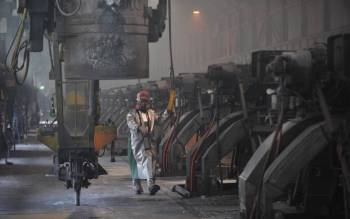
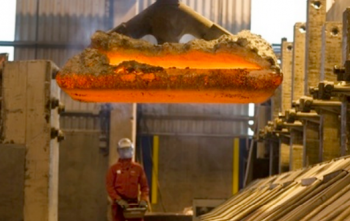
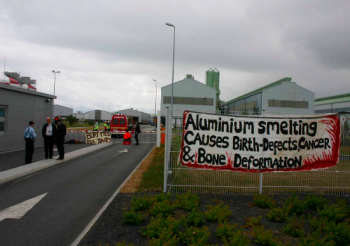
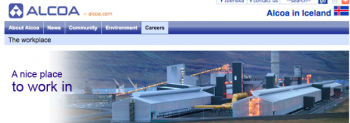
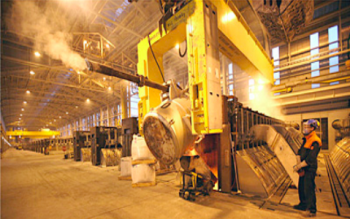
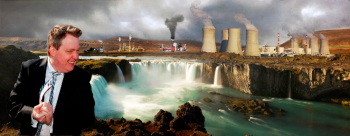
Idiots !!!! Shut those factories down, restore your backbones and get rid of the people in your government who think the safety conditions in those plants are good for the workers, and express little consideration to extent of the damage these plants are doing to the landscape.
I was shocked to read about the working conditions at these factories. Has Iceland no labor laws, no health and safety regulations? If so, who is responsible for enforcing them? Alcoa, like other for profit publicly owned corporations, will only be constrained by external enforcement of laws which protect all stakeholders, not just owners.